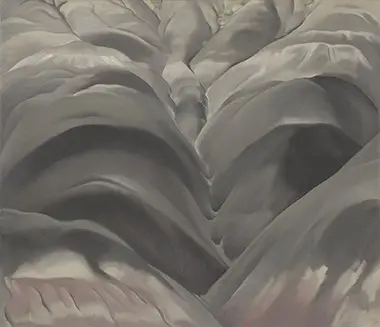During her long and very productive life, Georgia O'Keeffe was one of the most influential and controversial artists of the last century and was dubbed the "Mother of American Modernism". Famous not only for paintings of enlarged flowers and New York buildings, but also landscapes found here. The area depicted in her works is a series of desolate, grey, rolling hills situated in the Bisti Badlands in the heart of Navajo country which O’Keeffe once described as resembling "a mile of elephants".
On numerous camping trips to the area, O’Keeffe produced an amazing volume of work including the Black Place painting which was followed in later years by numbers II and III as well as pastels, photographs and pencil sketches.
In 1929, seeking new sources of inspiration, O'Keeffe traveled to New Mexico and set up a studio at a friend's house in Taos from where she took frequent solo trips into the mountains and deserts of the surrounding region. It was here that she produced her world-famous oil painting The Lawrence Tree and also decided to relocate to the area and purchased the Ghost Ranch for that purpose. The Black Place of O'Keeffe's paintings is a desolate area about 150 miles to the west of the Ghost Ranch and was a major theme in her works between 1936 and 1949. The Black Place painting focuses not on the details of the hills but rather on their rolling and flowing continuity as one hill blends into the next. The painting conveys a sense of peace and quiet and, although depicting a bleak and desolate place, there is a feeling of solitude and tranquillity which transmits itself to the viewer as well as a sense of calmness.
